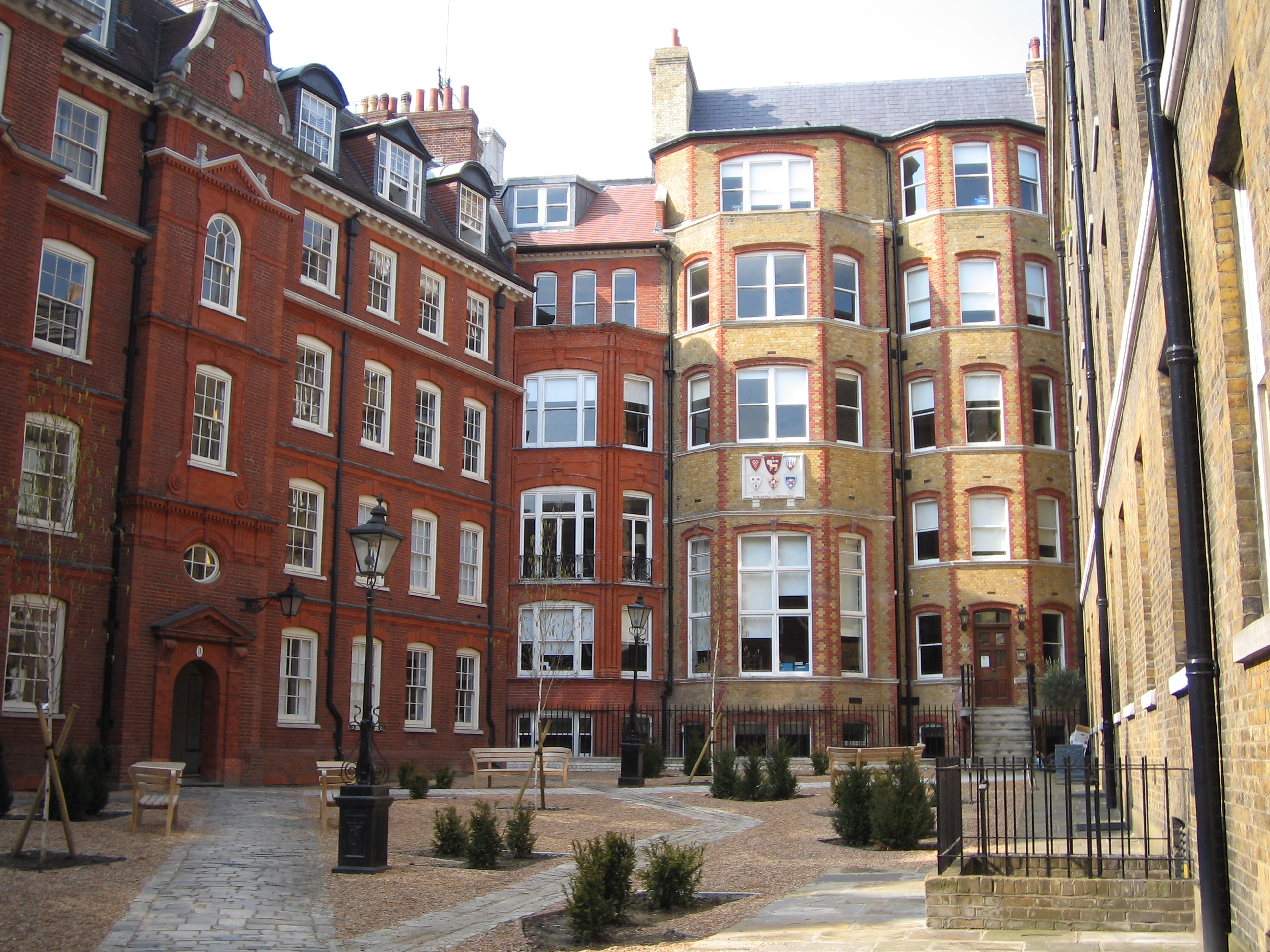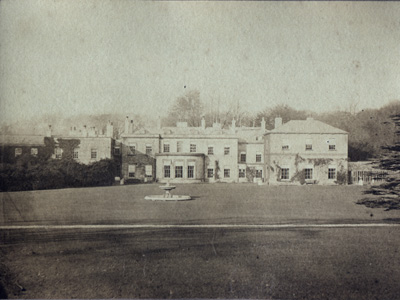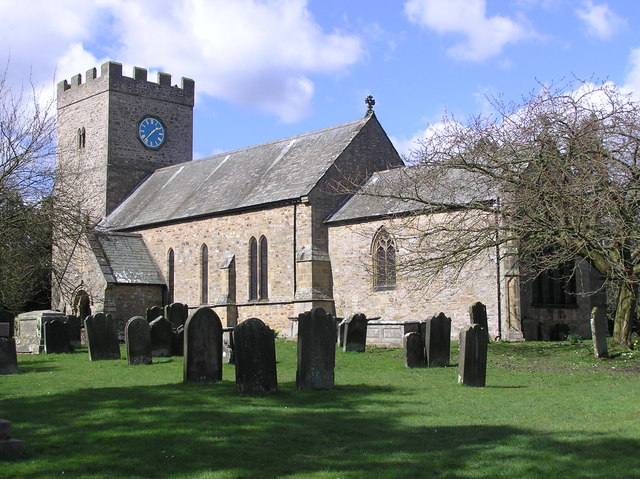|
Sir Charles Turner, 1st Baronet, Of Kirkleatham
Sir Charles Turner, 1st Baronet (11 November 1727 – 26 October 1783) was a British politician and Lord Mayor of York. Early life Turner was the son and heir of Jane (née Bathurst) Turner and William Turner, of Kirkleatham, in present-day Redcar and Cleveland, England. His father was the second son of Charles Turner and his mother was the daughter of Charles Bathurst, Esq. of York. Along with his aunts, Mary (née Bathurst) Sleigh and Frances (née Bathurst) Forster, his mother was the heiress of her brother, Charles Bathurst, Esq. of Skutterskelfe Hall and Arkendale. He was educated at Beverley Grammar School, and admitted to the Inner Temple in 1744; he also entered Trinity College, Cambridge in 1745. Career He was High Sheriff of Yorkshire for 1759 to 1760. From 21 March 1768 to 17 November 1783, he was Member of Parliament for York. He was Lord Mayor of York for 1772. Turner was created Baronet, 8 May 1782. Personal life He married twice: firstly to Elizabeth Wombwel ... [...More Info...] [...Related Items...] OR: [Wikipedia] [Google] [Baidu] |
Charles Grey, 2nd Earl Grey
Charles Grey, 2nd Earl Grey (13 March 1764 – 17 July 1845), known as Viscount Howick between 1806 and 1807, was a British Whig politician who served as Prime Minister of the United Kingdom from 1830 to 1834. He was a member of the noble House of Grey. Grey was a long-time leader of multiple reform movements, and during his time as prime minister his government brought about two notable reforms. The Reform Act 1832 enacted parliamentary reform, greatly increasing the electorate of the House of Commons. The Slavery Abolition Act 1833 led to the abolition of slavery in most of the British Empire, with compensation to be paid to slave-owners. Grey was a strong opponent of the foreign and domestic policies of William Pitt the Younger in the 1790s. In 1807, he resigned as foreign secretary to protest against George III's uncompromising rejection of Catholic Emancipation. Grey finally resigned as prime minister in 1834 over disagreements in his cabinet regarding Irelan ... [...More Info...] [...Related Items...] OR: [Wikipedia] [Google] [Baidu] |
Inner Temple
The Honourable Society of the Inner Temple, commonly known as the Inner Temple, is one of the four Inns of Court and is a professional associations for barristers and judges. To be called to the Bar and practise as a barrister in England and Wales, a person must belong to one of these Inns. It is located in the wider Temple area, near the Royal Courts of Justice, and within the City of London. The Inn is a professional body that provides legal training, selection, and regulation for members. It is ruled by a governing council called "Parliament", made up of the Masters of the Bench (or "Benchers"), and led by the Treasurer, who is elected to serve a one-year term. The Temple takes its name from the Knights Templar, who originally (until their abolition in 1312) leased the land to the Temple's inhabitants (Templars). The Inner Temple was a distinct society from at least 1388, although as with all the Inns of Court its precise date of founding is not known. After a disrupted early ... [...More Info...] [...Related Items...] OR: [Wikipedia] [Google] [Baidu] |
Frederick Mason Trench, 2nd Baron Ashtown
Frederick Mason Trench, 2nd Baron Ashtown DL (25 December 1804 – 12 September 1880) was an Irish peer and magistrate. Early life He was son of Francis Trench and his wife Mary Mason, second daughter of Henry Mason, and nephew to Frederick Trench, 1st Baron Ashtown. Career While his claim to his uncle's title was admitted only in 1855, he actually succeeded per special remainder on the latter's death in 1840. Trench was educated at the University of Cambridge. He was appointed High Sheriff of County Galway for 1840 and represented the county as Deputy Lieutenant. Personal life On 29 August 1831, he married firstly Harriet Georgiana Cosby, youngest daughter of Thomas Cosby, of Stradbally Hall and his wife Charlotte Elizabeth Kelly (daughter of Rt. Hon. Thomas Kelly, Second Justice of the Common Pleas of Ireland). Together, they were the parents of two daughters and three sons, including: * Hon. Charlotte Elizabeth Trench (1832–1854), who died unmarried. * Hon. Freder ... [...More Info...] [...Related Items...] OR: [Wikipedia] [Google] [Baidu] |
Frederic Richard Thomas Trench-Gascoigne
Colonel Frederic Richard Thomas Trench Gascoigne DSO JP (4 July 1851 – 2 June 1937) was a British soldier and landowner. Early life He was born on 4 July 1851, the only son of Frederic Charles Trench Gascoigne JP, and his wife, the former Mary Isabella Oliver Gascoigne. His mother was the elder daughter and co-heir of Richard Oliver Gascoigne of Parlington Hall, Yorkshire and Castle Oliver, County Limerick. His aunt Elizabeth Oliver Gascoigne was the wife of Frederick Mason Trench, 2nd Baron Ashtown. Career Gascoigne was a captain in the Royal Horse Guards and served in the Egyptian War of 1884 to 1885. He was second-in-command and later commanding officer of the 3rd Battalion Imperial Yeomanry in the Second Boer War in South Africa from 1900 to 1901, and was awarded the Distinguished Service Order in 1900. He was lieutenant-colonel and honorary colonel commanding the Yorkshire Hussars in 1903 and an honorary colonel in the British Army in 1904. Colonel Gascoigne was a Just ... [...More Info...] [...Related Items...] OR: [Wikipedia] [Google] [Baidu] |
Sir Thomas Gascoigne, 8th Baronet
Sir Thomas Gascoigne, 8th Baronet (7 March 1745 – 11 February 1810) was born on 7 March 1745 on the Continent into a devout Catholic gentry family based in Yorkshire. Despite receiving a solid Catholic education at institutions in northern France and Italy, Gascoigne would later renounce his religion to become a Foxite Whig Member of Parliament. Prior to his apostasy, he travelled extensively as a Grand Tourist throughout much of Spain, France and Italy in the company of the noted travel writer Henry Swinburne, who would later record their journeys in two popular travel guides ''Travels through Spain in the Years 1775 and 1776'' (1779) and ''Travels in the Two Sicilies, 1777–1780'' (1783–5). Together they gained close access to the leading courts of Europe, particularly in Spain and Naples. An honorary member of the Board of Agriculture, Gascoigne was an important advocate of agricultural reform as well as a considerable coal owner who helped pioneer technological developm ... [...More Info...] [...Related Items...] OR: [Wikipedia] [Google] [Baidu] |
Parlington Hall
Parlington Hall was the seat of the Gascoigne family, Aberford near Leeds in West Yorkshire, England. The Parlington estate contains a number of features: the grade II* listed Triumphal Arch, designed by Thomas Leverton and built around the end of the Eighteenth Century, which is unique in commemorating the victory of the American colonialists over the British in the American War of Independence. An inscription on both faces of the arch reads, "Liberty in N.America Triumphant MDCCLXXXIII"; a tunnel known locally as the "Dark Arch", which was built to shield the inhabitants of the hall from traffic passing along Parlington Lane, still intact almost two hundred years later; an underground icehouse, also intact — a testament to Georgian brick construction. History The Parlington estate was acquired by the Gascoignes from the Wentworth family in 1546. The hall was modified by successive family members, before it was abandoned in the early years of the twentieth century it was a cu ... [...More Info...] [...Related Items...] OR: [Wikipedia] [Google] [Baidu] |
Richard Oliver Gascoigne
Richard Philip Oliver (1763 – 14 April 1843), later known as Richard Oliver Gascoigne, was an Irish landowner at Castle Oliver in County Limerick and Parlington Hall in Yorkshire. Early life He was the eldest surviving son of Isabella Sarah (née Newman) Oliver and Silver Oliver of Castle Oliver in County Limerick. His father sat in the Irish House of Commons for County Limerick. His paternal grandparents were Jane Katherine (née Silver) Oliver and Robert Oliver, who also sat in the Irish House of Commons. Career He served as High Sheriff of Yorkshire in 1816. Gascoigne lived at Parlington Hall in Yorkshire for 33 years. During his time there, he completed several improvements, including construction of the Dark Arch built between 1813 and 1814, a tunnel of around 80 yards in a sweeping curve along the line of Parlington Lane, as well as the Light Arch. He invested in the agricultural interests at Parlington, developing mineral assets on the estate, particularly coal minin ... [...More Info...] [...Related Items...] OR: [Wikipedia] [Google] [Baidu] |
Charlotte Gleadowe-Newcomen, 1st Viscountess Newcomen
Charlotte Gleadowe-Newcomen, 1st Viscountess Newcomen (died 16 May 1817), née Newcomen, was an Anglo-Irish peeress. She was the only child and heiress of Edward Newcomen, a landowner and relation of the Newcomen baronets. On 17 October 1772 she married William Gleadowe, who was later a Member of Parliament and was made a baronet in 1781. On 29 July 1800 Charlotte was created Baroness Newcomen in the Peerage of Ireland The Peerage of Ireland consists of those titles of nobility created by the English monarchs in their capacity as Lord or King of Ireland, or later by monarchs of the United Kingdom of Great Britain and Ireland. It is one of the five divisi ... in her own right; the title was created in honour of her husband, but in such a way that would enable him to sit in the House of Commons. The family was further honoured when Charlotte was created Viscountess Newcomen on 25 January 1803. The remainder of both titles was to the male heirs of her husband, and upon Char ... [...More Info...] [...Related Items...] OR: [Wikipedia] [Google] [Baidu] |
Sir William Gleadowe-Newcomen, 1st Baronet
Sir William Gleadowe-Newcomen, 1st Baronet (1741–21 August 1807) was an Anglo-Irish politician. Born William Gleadowe, he assumed the additional surname and arms of Newcomen following his marriage to Charlotte Newcomen, only child and heiress of Edward Newcomen, on 17 October 1772. On 9 October 1781 he was created a baronet, of Carrickglass in the Baronetage of Ireland. Between 1790 and 1800 Gleadowe-Newcomen was the Member of Parliament for County Longford in the Irish House of Commons.E. M. Johnston-Liik''MPs in Dublin: Companion to History of the Irish Parliament, 1692-1800''(Ulster Historical Foundation, 2006), p. 91 (Retrieved 4 April 2020). Following the Acts of Union 1800, he represented Longford in the House of Commons of the United Kingdom between 1801 and 1802. On 29 July 1800 Gleadowe-Newcomen's wife was created Baroness Newcomen in the Peerage of Ireland in honour of her husband, with the remainder to his male heirs. Upon Gleadowe-Newcomen's death in 1807 he was s ... [...More Info...] [...Related Items...] OR: [Wikipedia] [Google] [Baidu] |
Sir Charles Turner, 2nd Baronet
Sir Charles Turner, 2nd Baronet (28 January 1773 –1 February 1810) was an English politician. He was the son of Sir Charles Turner, 1st Baronet, of Kirkleatham, Sir Charles Turner, Bt of Kirkleatham, Kirkleatham Hall, Yorkshire by his second wife Mary, the daughter of James Shuttleworth of Gawthorpe Hall. He joined the Army as a Cornet in the Royal Horse Guards in 1789, was a lieutenant in 1794-5 and became a captain in the 4th West Yorkshire militia in 1797. He was elected at the 1796 British general election, 1796 general election as a Member of Parliament (United Kingdom), Member of Parliament (MP) for Kingston upon Hull (UK Parliament constituency), Kingston upon Hull, and held the seat until the 1802 United Kingdom general election, 1802 general election. He died in 1810 aged only 37, leaving his Kirkleatham estate to his widow. He had married Teresa, the daughter of Sir William Gleadowe-Newcomen, 1st Baronet. She later married Henry Vansittart, the High Sheriff of ... [...More Info...] [...Related Items...] OR: [Wikipedia] [Google] [Baidu] |
Forcett
Forcett is a village in the Richmondshire district of North Yorkshire, England. It lies near the border with County Durham, on the B6274 road about 8 miles south of Staindrop. Nearby villages include Eppleby, Caldwell and Aldbrough. History The origin of the place-name is from the Old English words ''ford'' and ''set'' meaning fold by a ford and appears as ''Forset'' in the Domesday Book of 1086. In 1367, the manor was granted to Sir Walter Urswyk by John of Gaunt, Duke of Lancaster, Earl of Richmond, for Urswyk's valour at the Battle of Navarretta during the Hundred Years' War. Urswyk was later High Constable of Richmond Castle and Master Forester of the Forest of Bowland. Buildings St Cuthbert's Church is located in the centre of the village. On the edge of the village is Forcett Park in which stands Forcett Hall, a Palladian Palladian architecture is a European architectural style derived from the work of the Venetian architect Andrea Palladio (1508–1580). ... [...More Info...] [...Related Items...] OR: [Wikipedia] [Google] [Baidu] |
Wombwell
Wombwell () is a town in the Metropolitan Borough of Barnsley in South Yorkshire, England. The town in the 2011 census was split between a ward called Wombwell, as well as small parts that fell under two other wards called Darfield (specifically the area south of Pitt Street, including Broomhill) and Stairfoot (specifically the area south of Aldham Crescent). Added together, these list the town's population as roughly 15,316. Historically within the West Riding of Yorkshire, its name's origin may mean "Womba's Well", or "well in a hollow". Wombwell railway station (formerly Wombwell West) serves the Penistone and Hallam lines. Until 1959 it had another station ( Wombwell Central) on the Barnsley-Doncaster line that was closed when that line lost its passenger service. Wombwell was home to two collieries; Wombwell Main and Mitchells Main. Wombwell is close to the large shopping and leisure facilities of Cortonwood, and also has a number of local business from cafes to travel age ... [...More Info...] [...Related Items...] OR: [Wikipedia] [Google] [Baidu] |




